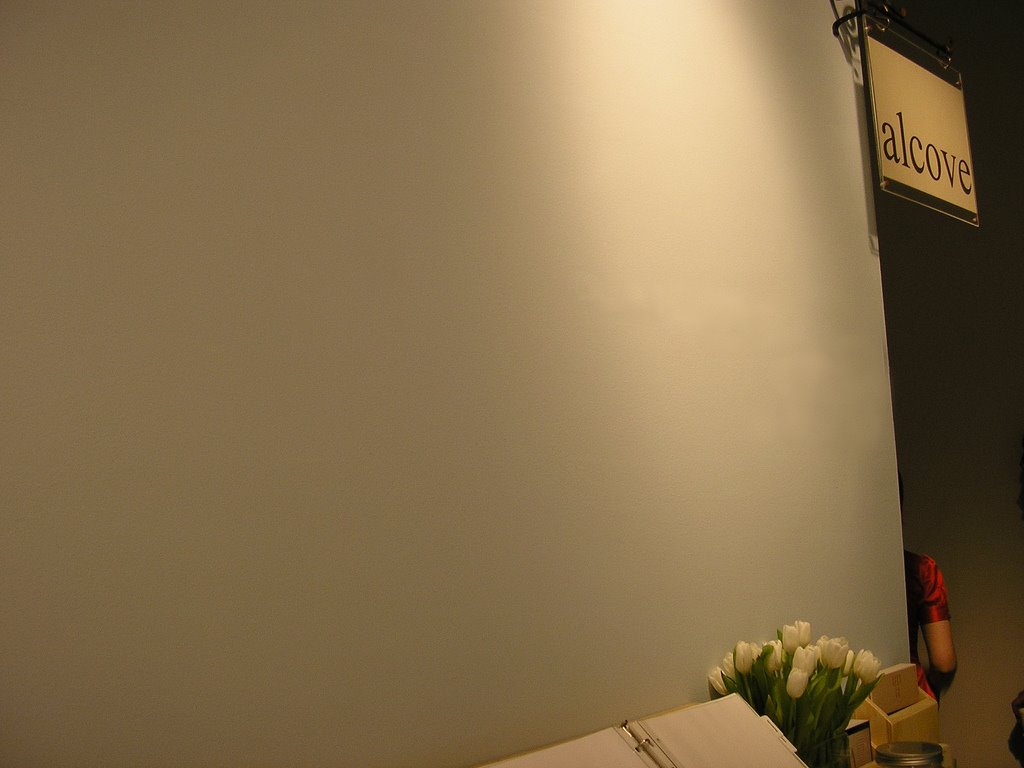

Jacqueline Skaggs
Charted Breaths
may 3 - june 16, 2007


image: #2 from a set of 4 drawings. "For Mr. Reinhardt, Opals, Dreams, Lines and Hearts" mapped periods from "Art as Art", Art in Theory, pp. 806-809, graphite powder and ink on paper.
After several years of making paintings that married minimalism to the romantic use of light I had become suspicious of the works aesthetics. Aside from their conceptual, unseen, characteristics and though they were burdened in layers and layers of glazing, the paintings appeared too simple, too minimal, too obvious and most of all - too much about their surface.
I stopped painting for a while and turned to books. I turned to poetry and the tattered art history books that I have dragged around for over twenty years, the big fat separated-at-the-spine kind of books. As pure exercise I began borrowing images from various resources with the intention of creating my own narratives with them. I wanted a break from the practice of painting.
Using a pounce wheel I transferred figures, birds, moths, structures and forms from the pages of these books. Each image was made up of a string of small, punctured dots. While pouncing the stars from a Jasper Johns painting my eyes were guided to the small dots (periods) buried within the text on the page. I began mapping those and within days my transfers consisted only of the carefully mapped, charted dots. Soon, “The Paradiso, by Dante Alighieri” was reborn as I charted through the text of a 1904 edition and unleashed 33 "drawings" consisting of newly discovered constellations from Dantes very own heaven.
My work explores the moments between the words, between the thoughts, at the breath. A pattern of pauses emerges and surrenders to a predestined design born solely from words.
pounce wheel; Pounce bags are commonly used in conjunction with pounce wheels to transfer drawings from one surface to another. The toothed pounce wheel is used to perforate the lines of a drawing with small, evenly spaced holes, and then the pounce bag is used to dust those perforations, effectively transferring the design or pattern to the surface beneath.
Jacqueline Skaggs
Jack Livingston (Radar): The staggering complex Morse code multiple constellation like interpretive resonance of Jacqueline Skaggs' endeavor is rooted in her sense of combining the sublime poetic with purist painting. She is one of those artists who manage to keep a clear clean balance between the two. There is always something behind the beauty. She says she uses a personal psychological hook on which to hang her work and is not at all averse to the spiritual and the elegance of her natural style. There is no wavering here. It is all clarity and bold balance. Skaggs has found a way in these small paper paintings to minimally express literal volumes.
Scott Espeseth
Silver Points
may 3 - june 16, 2007


image: Backyard, 2006 5" x 6" silverpoint
My recent series of drawings are idiosyncratic, intimately scaled images derived from personal memories, boyhood fantasies, and the visual environment of my home in the upper mid-west. Carefully drawn in graphite or silverpoint, they are modest in scale, often not much larger than a credit card. Despite their size, they are vivid and dense with information, giving the impression of vast worlds compressed into a tiny field of vision. Through the filter of memory, a sense of unease emerges. Distant storms and contrails mark hazy summer skies, and an eerie stillness permeates. Objects are veiled or covered with drapery, then sometimes revealed and other times left mysterious. Alluding to fears just below the surface, or to the incompleteness of recall, the drapes become shrouds for lost memories. Drawing drapery in silverpoint opens a dialog with the work of old masters that intersects with the contemporary imagery of swimming pools, backyards, and median strips, in a vain attempt to connect these spaces and memories with something more timeless and permanent. The images are frozen, but seem fragile and transient, just barley stained into the surface of the paper. Silverpoints slowly change over time, alternately fading and returning depending on their stage of chemical transformation. These images speak to the transience of life, culture, and memory, and the underlying anxiety of our impermanent situation.
Scott Espeseth
